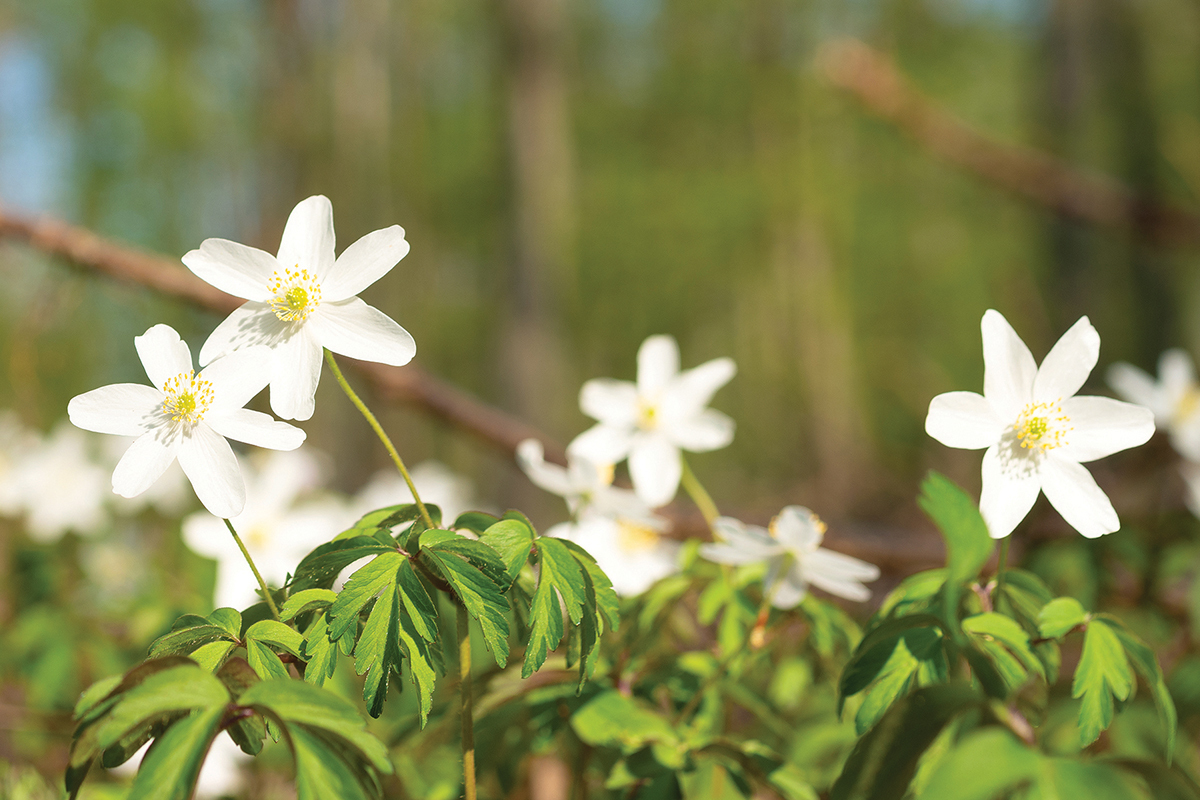Spring Plantings
Native Plants To Consider For Your NC Landscape

As you invest in your landscape, you will want to make sure that you are spending time and money on plants that will do well in the North Carolina climate. Using native plants that have thrived for centuries in the state’s weather, water, and soil conditions will help you enjoy a beautiful and healthy landscape that also supports the rest of the local ecosystem. With that in mind, here are some suggestions for plants you should consider.
Wood-Anemone
This flowering plant (pictured), which thrives in moist, well-drained soil and requires little maintenance, provides a nice contrast of bright green foliage and large, white flowers for added beauty to any springtime landscape. Wood-anemone reaches a height of about 12 inches, making it a great border plant to fill in different garden areas. This plant really comes to life in the spring and will provide some much-appreciated color after the winter months.
Northern Maidenhair Fern
If you have spent any time in the North Carolina mountains, you have probably noticed this fern. It is hardy enough to handle a variety of temperatures and does best in shady locations with moist soil. Planting the northern maidenhair fern can provide ground cover and can add texture to your landscape. Eventually, it can grow to be about two feet tall.
Eastern BlueStar
This is one plant that will continue to delight throughout the entire year. In the spring, you will enjoy small, delicate periwinkle flowers. Once summer temperatures arrive, the blooms will fall off and you will be left with a rich, green shrubbery. When the leaf colors change in the fall, the eastern bluestar will turn a bright yellow. It is a truly beautiful and attention-grabbing plant that thrives here in North Carolina. One of our state’s most beautiful native species, eastern bluestar prefers full sun, is tough enough to require almost no maintenance, and is adaptable to most garden situations.
Flowering Dogwood
The dogwood flower is the state flower of North Carolina – and a beloved sign of spring. The flowers are actually considered bracts and grow on the flowering dogwood. This tree, which can be found from the mountains to the coast, is considered a smaller species, since most will only reach 15 to 25 feet tall. From April to June, they are covered in white blooms that often have a hint of pink. These enchanting trees do best in well-drained soil and lots of sun.
Climbing Hydrangea
If you would like to add some privacy or coverage to your home, the climbing hydrangea is a deciduous plant that flowers and uses suckers to climb up walls and trellises. The lacy white flowers come out in early summer and emit a nice fragrance. You can creatively use the climbing hydrangea, which grows well in both sun and shade, by adding some vertical interest to your landscape design.
Swamp Milkweed
Getting its name from the milky-looking appearance of its sap and delightful aroma, the swamp milkweed can thrive in North Carolina native plant landscapes, as long as the soil does not dry out completely. Best of all, the swamp milkweed attracts butterflies, and is the only host plant for the monarch butterfly.
This spring is all about rebirth and creating a landscape that is beautiful and functional throughout the entire year. From colorful perennials and ferns to plants that help attract butterflies, there are a variety of native options that can be easily integrated into your existing landscape.

